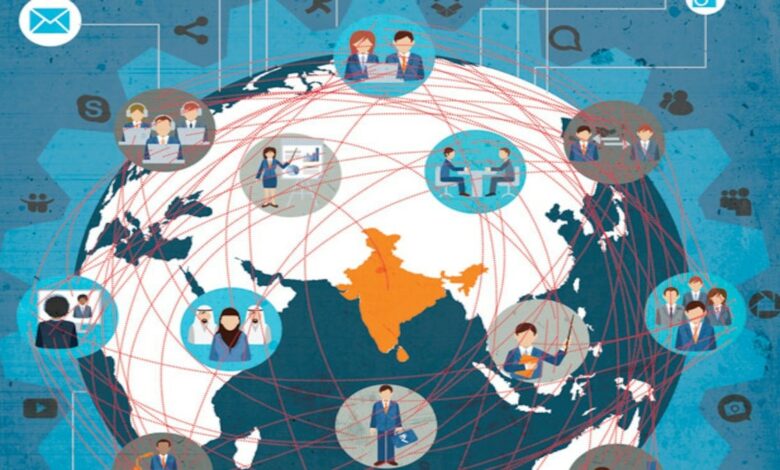Brand India: The Economic Value Of India As A Global Brand

In India, the beginning of the 1990s was a time of fragile optimism and fear because the nation had just ‘opened up’ its economy to enter the free market community, a capitalist world after the Cold War’s end of history. The hope of foreign investment, high economic growth, and the unleashing of the caged spirit of Indian industry held out the seductive formula. It also promised Indian people more consumer options, hopes of a better life, and, most of all, an opportunity to set the path of the nation towards promising futures of the 21st century. The march towards market liberalisation also included breaking away from India’s tradition of economic nationalism: the anticolonial economy or self-reliance of swadeshi (literally,’ one’s own nation’). After national independence, Swadeshi has dominated Indian economic policy and thought and prioritised sovereignty over the wealth of the country. The most famous manifestation of Swadeshi politics was the boycott of foreign-made products.
In the 1990s, the new Indian economic policy opened the consumer market to foreign products. It was named the ‘coca-colonization‘ of India’ by Swadeshi-school economic thinkers. In this drastic transition to free-market capitalism, Coca-Cola became both an emblem of the material pleasures now available to Indian clients and of the treachery of ‘selling out’ to foreign corporations. By 1977, the Indian state had banned Coca-Cola. Subsequently, the business was transformed into a nationalist venture that sold Thums Up, an Indian soft drink brand. Not only was Coca-Cola back in newly liberalised India in the 1990s, but it also bought the Indian brand to boost its retail operations. Thums Up’s corporate selling to Coca-Cola demonstrated how the ideals of Swadeshi economic nationalism were replaced by liberalisation and globalisation. The free-market lobby had “sold out to big business” and turned its back on India’s anti-colonial dream of economic independence, it was ruefully observed.
Though liberalisation was challenged by Swadeshi and Socialist supporters in the early 1990s, few understood the full ramifications of India’s transition to free-market capitalism. India’s liberalisation has proven to be more than a question of international consumer products or a foreign takeover of firms that socialist and swadeshi advocates alike have tried to stop. In the 21st-century world economy, the nation-state is itself undergoing the transformation into an enclave of global resources. In the 1990s, India began courting international investments to rejuvenate its economy through global investment programmes. What initially began as a push to export ‘Made in India’ goods on global markets would soon turn into a’ Make in India‘ initiative aiming to reshape the nation as a real ‘world manufacturing’ plant. India was represented as an acquisition hotspot in the global markets by a landmark commercial campaign at the turn of the millennium. ‘India Shining’ was the campaign name, and it was an apt representation of the transition to the capitalism of the postcolonial world.
By providing India as a haven for foreign capital made available by state-led investment initiatives, the metaphor signalled a deep thought. The injection of capital has made India shine in the theatre of the world economy or, in the language of policy analysts, its systemic reforms and the elimination of trade barriers have been supported and sponsored by the state and promoted by global financial institutions (the IMF and the World Bank). This move changed the old compact between state and country. When structurally changed, the country became a manufacturing centre, its land a reservoir of untapped natural resources, its population a ‘demographic dividend’ that produced and consumed both, and a specific brand identity of its culture. India Shining was a nation and state synonymous with an optimistic agenda of industrial growth and development, the erasure of imperial humiliation, and even the reconstruction of a golden and legendary Hindu past. As an ancient Hindu republic, this soft-power mythology of the country soon became a powerful instrument in the religious nationalism of Hindutva, originally fashioned to help India acquire a unique cultural identity in the global economy. Hindu nationalists believe that this wonderful, ancient, pre-Muslim civilization reflects authentic India.
Another main example, the latest restructuring of the nation-state in India is the false promise that a flat world of free trade will render nation-states redundant. Proponents have long envisioned globalisation as a world-in-motion, an open-ended economy without borders, a shorthand for unrestrained movement of money, commodities, people and ideas. It was expected that national borders would become obsolete. The story of globalisation itself has been told in the vocabulary of movements, currents, gestures, networks, mobility, circulation and fluidity. The India Shining campaign shows how not only did the nation-state defy the forecasts of its end, but also underwent a makeover in the global economy to become a capitalist development story.’ The International Policy Centre, founded in 1998 by financial firms and think tanks such as Britain’s Prime Minister Tony Blair and his foreign secretary Robin Cook, persuaded Global South countries to make economic changes and ‘open up’ their economies to foreign capital investment. Postcolonial economic growth and a future were offered by this formula as a great force to win a place at the global political table. India stood as the forerunner among the postcolonial nations who slowly accepted the liberal agenda of capitalist reforms. In spite of its sheer difficulty and scale in the global economy, India’s move to accept market liberalisation served as a convincing example. The ‘India Tale’ became a shorthand for the promised prosperous times for people by policymakers and journalists and gains for investors in the country transitioning to liberal capitalism.
The India Tale begs the question: what does loving the country entail in the 21st century? To raise this question still seems an aberration, considering that the vision of the country is at odds with commodification and consumer transactions. After all, Indians have long envisioned the country as holy with a shared past of love and pain, a complex moral-spiritual endeavour. In Europe in the 19th century, the roots of cultural nationalism lie in the definition of nations as ‘organic entities, living identities’ needing sacrifice and commitment, a’ peculiar kind of love ‘that overshadowed all others in order to preserve this virtual individual. Nationalists assumed the country to be a special entity, with an inalienable civilizational nature and a timeless past, and with its land personified as a holy being. The spirit of the people, the national romance that embraced natural landscapes and their ethnic inhabitants, was to be praised, then, to love the country. The true symbol of nationalism was martyrdom for its cause. A feminine manifestation of the nation’s geographical expanse, the figure of the mother goddess, Bharat Mata (Mother India), acted as the holy focus of devotion and sacrifice for Indians participating in the anti-colonial war.
The absence of Muslim characters or icons in Brand India’s imagery is one thing to remember, but how will the holy nation be put at the disposal of investors in the marketplace?
The ingenuity of the country as a living being, a special entity that can be dressed up as a packaged investment destination, is what makes it transcendental and free to business trade. The fact that its landscape has untapped natural resources and that its people are customers and manufacturers allowed the state to represent the cultural identity of the nation, making it a corporate brand identity. Loving and being committed to the country, then, means working to improve the nation’s brand image and economic potential. It means adding value to the nation by projecting it as a profitable, market-ready investment destination and the logic of cultural nationalism of the 19th century is turned upside down: the market value of the country as a capitalist enclosure that produces profit becomes a way of affirming the integrity of the people (people) as a great nation. The more money the brand-new nation absorbs and produces, the more legitimised its aura, its assertions of the essence, its identity as the chosen people, and its natural relationships with the landscape are. The infusion of capital continuously provides something that surpasses capital-the aura/spirit or the non-extractable distance ploughed back to raise brand capital. In short, the cultural distinction that has been turned into a corporate name is put to use to collect revenue, and cash in return reinforces the claims of cultural individuality.
The commodification of the country consecrates the entire idea of state sovereignty in ever-new ways: the visual power to celebrate the revitalised nation and to see and show the national realms and their inhabitants at the disposal of global capital as major growth factors. Consider the promotional content of Brand India, which often exists as a repackaging of the popular cultural exotica for its buyers in India and the world-from yoga to nature, from vibrant festivals to Ayurveda-in global aesthetics.
In ever-new ways, the commodification of the country consecrates the very concept of state sovereignty: the visual power to celebrate the revitalised nation and to see and display the national territory and its people as important development factors at the disposal of global capital. Consider the promotional content of Brand India, which often appears as a repackaging of the popular cultural exotica for its customers in India and the world-from yoga to nature, from vibrant festivals to Ayurveda-in global aesthetic. What is essential to this brand-making cultural policy is not only what is within the picture-frame, but what is held outside it: the near absence of Muslim figures or symbols in the image of Brand India, for instance. If there is an exception, it is the appearance of a 17th century Indo-Islamic-style Mughal monument, the Taj Mahal. This mausoleum is a permanent thorn in Hindu nationalist politics, but one which can’t easily be evicted from Brand India. The monument is the prime tourist attraction in India and a place of world heritage that generates a steady income.




